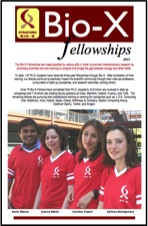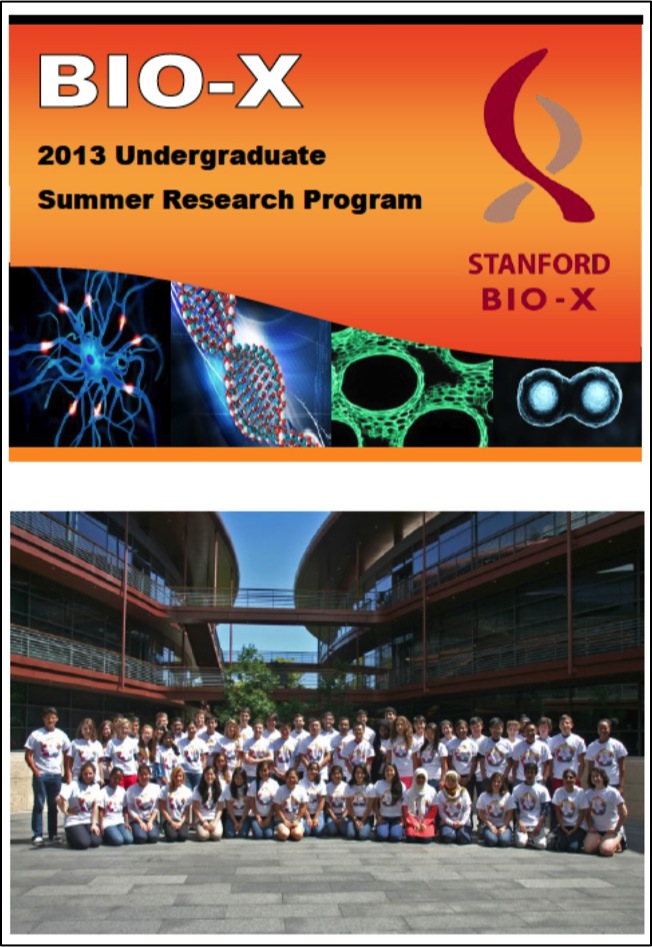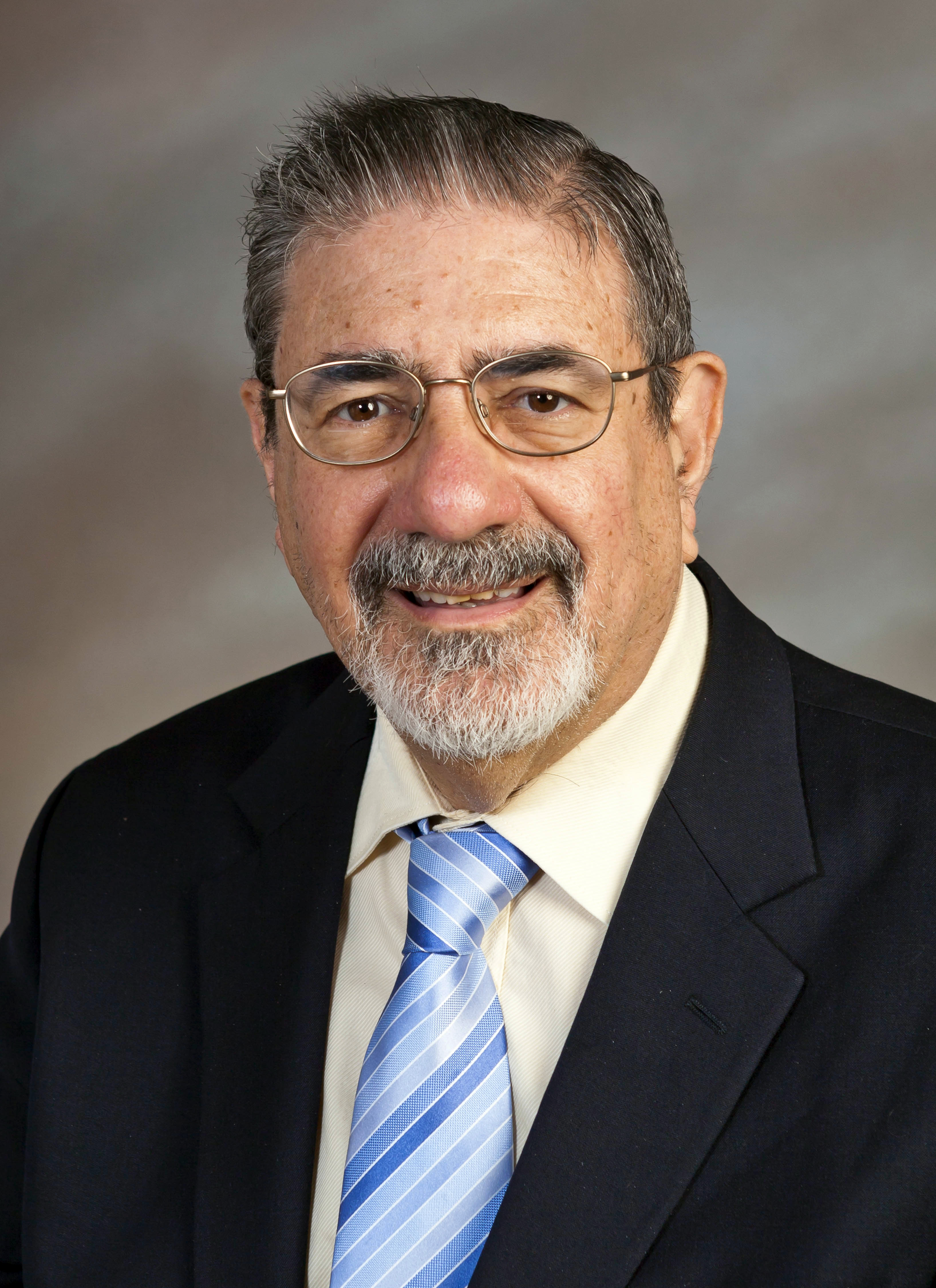
Welcome to the biweekly electronic newsletter from Stanford Bio-X for members of the Bio-X Corporate Forum. Please contact us if you would like to be added or removed from this distribution list, or if you have any questions about Stanford Bio-X or Stanford University.
Highlights
** On October 9, 2013, Bio-X celebrated the 10th Anniversary of the James H. Clark Center, the hub of Bio-X. Check out CLARK CENTER @ 10X as well as the Bio-X Timeline over the last 15 years!!
** Check out the article by Stanford President John Hennessy in the Nov/Dec 2013 issue of the Stanford Magazine on Bio-X and the Clark Center, "A Cauldron of Innovation".
Seed Grants
** Bio-X just announced its 7th round of requests for Letters of Intent for the IIP Seed Grant Program!!
** Upcoming event: BIO-X POSTER SESSION - Time: March 3, 2014 from 3-5 pm - Location: Nexus Cafe, Clark Center
 SEED GRANTS FOR SUCCESS - Stanford Bio-X Interdisciplinary Initiatives Program (IIP)
SEED GRANTS FOR SUCCESS - Stanford Bio-X Interdisciplinary Initiatives Program (IIP)
The Bio-X Interdisciplinary Initiatives Program represents a key Stanford Initiative to address challenges in human health. The IIP awards approximately $3 million every other year in the form of two-year grants averaging about $150,000 each. From its inception in 2000 through the fifth round in 2010, the program has provided critical early-stage funding to 114 different interdisciplinary projects, involving collaborations from over 300 faculty members, and creating over 450 teams from five different Stanford schools. From just the first 5 rounds, the IIP awards have resulted in a 10-fold-plus return on investment, as well as hundreds of publications, dozens of patents filed, and most importantly, the acceleration of scientific discovery and innovation.
In 2012, Stanford Bio-X selected 23 new seed grant projects as the winners of the 6th round. Please go here to view the list of awardees, along with the titles of their projects and the abstracts of the research. Competition was intense as the awardees were chosen from 118 Letters of Intent (LOIs). Selection criteria included innovation, high-reward, and interdisciplinary collaboration. (To view the 114 other IIP projects that have been funded from the first 5 rounds, please click here.) In addition, SANOFI has also funded 4 new Bio-X IIP Seed Grant projects from round 6!
On Monday, August 26, 2013, Bio-X had its second annual IIP Symposium of the year at the Clark Center, which highlights projects that exemplify the Stanford Bio-X mission of crossing boundaries to bring about interdisciplinary research and solutions in the field of life bioscience. The symposium was a huge success with over 300 people attending this event, which included 8 oral presentations and 136 poster presentations. Recorded talks from the symposium will be uploaded soon. If you'd like to view the talks for previous symposia through the years, please click here.
We are cultivating and are highly successful in building meaningful collaborations with numerous corporate colleagues. New collaborations through our seed grant projects are highly encouraged. To learn about how to get involved, please contact Dr. Hanwei Li or Dr. Heideh Fattaey.
Fellowships
** NEW: Bio-X is pleased to announce the 11th annual competition for Bio-X Graduate Student Fellowships.
 BIO-X FELLOWSHIPS
BIO-X FELLOWSHIPS
Every year, graduate students and postdoctoral scholars of Bio-X affiliated faculty are highly encouraged to apply for the Bio-X Fellowships, which are awarded to research projects that are interdisciplinary and utilize the technologies of different fields to solve different biological questions. Students are encouraged to work collaboratively with professors of different departments, thus creating cross-disciplinary relationships among the different Stanford schools. Our fellows have conducted exciting research, resulting in publications in high-impact journals and have been offered excellent positions in industry and academia. To date, Stanford Bio-X has a total of 152 Fellows.
On June 26, 2013, Bio-X held its annual Bio-X Fellows Symposium, where there were four 15-minute oral presentations followed by one-minute spiels from current fellows. The 25 newest fellows selected this year were also announced, and about 100 attendees came to the symposium. Please click on the "Bio-X Fellows Symposium" link above for the agenda and titles of the talks, and on the icon of the brochure above for the updated and latest Bio-X Fellowships brochure.
To view the numerous projects that have been awarded over the years, please click here.
** NEW: Bio-X is pleased to announce its 9th call for applications for the Undergraduate Summer Research Program for the summer of 2014.
 BIO-X UNDERGRADUATE SUMMER RESEARCH PROGRAM
BIO-X UNDERGRADUATE SUMMER RESEARCH PROGRAM
The Bio-X Undergraduate Summer Research Program supports undergraduate research training through an award designed to support interdisciplinary undergraduate summer research projects. The program is an invaluable opportunity for students to conduct hands-on research, learn how to carry out experiments in the laboratory, and develop the skills to read and analyze scientific literature.
This program is eligible to Stanford students who want to work in the labs of Bio-X affiliated faculty. To date, 241 students have been awarded the opportunity to participate in the Bio-X Undergraduate Summer Research Program. This summer is Stanford Bio-X's 8th round of USRP.
Participating undergraduates are also required to present poster presentations on the research that they've conducted during the program. Please click here for title lists of past posters that our undergraduates have presented.
Many fruitful collaborations and relationships have been established with industry through fellowships. Please contact Dr. Hanwei Li or Dr. Heideh Fattaey if you'd like to learn more about how to get involved with these fellowship programs.
News
Stanford team helps woman battle epileptic seizures
Bio-X affiliated faculty Josef Parvizi
Supported by Bio-X NeuroVentures
Please click here to go to ABC 7 news to view the story and video.

Stanford chemist joins with radiologists to locate source of pain – with help from newts
Bio-X affiliated faculty Justin Du Bois, Sandip Biswal, and Frederick Chin
Bio-X IIP Seed Grant Project
The California newts on the Stanford campus may be limited in physical range to the area around a small now-dry lake, but their sphere of scientific influence extends much farther. Work that started in these amphibians decades ago has now resulted in a tool that can highlight the location of pain generation for the first time in a living animal. The work began in the 1960s, when Stanford scientists discovered that the native newts at Stanford had a chemical in their skin and eggs identical to the potent toxin found in pufferfish. (Outdoorsy students and their parents need not be afraid – the newts are only toxic if eaten.) This chemist, Harry Mosher (who died in 2001), spent much of his career analyzing and attempting to synthesize this toxin and related molecules, collectively called guanidinium toxins. They turned out to be an interesting group of molecules for chemists who like to develop new ways of stitching atoms together to form molecules. One such chemist, Justin Du Bois, later joined Stanford and started a lab focused on making and modifying the structures of the guanidinium toxins, even inheriting some chemicals from Mosher’s lab. Du Bois, an associate professor of chemistry, didn’t initially know about Mosher’s early work, but when he did they had a conversation that sent Du Bois in a new direction. In nature, pufferfish, frogs and many other animals are poisonous because the toxins they contain bind to channels on the surface of nerves and prevent those nerves from firing.


 Chemists develop new technique for improving stomach cancer surgery results
Chemists develop new technique for improving stomach cancer surgery results
Surgery Faculty George Poultsides, Bio-X Affiliated Faculty Dick Zare and Robert Tibshirani
When surgeon George Poultsides, MD, removes a tumor in the stomach or intestines, he takes out what he thinks is the entire mass and sends it to the pathology lab for evaluation. Completely removing each and every cancer cell is the best hope those patients have for a full recovery. As much as half an hour later, he finds out whether any cancerous cells remain at the edge of the tissue he removed. If yes, he takes out more tissue, sends it to pathology, and waits for the answer. Not only does this process keep the patient on the operating table longer, the information is wrong up to 30 percent of the time. Five days after the surgery, when a definitive test is complete, Poultsides, assistant professor of surgery, knows whether he got all of the cancerous cells or whether he might need to call the patient back for another surgery. This is where things stood when he got an email from chemistry postdoctoral scholar Livia Eberlin, PhD. She and her adviser, chemistry professor Richard Zare, PhD, had an unusual idea for how chemical analysis could improve the odds of detecting cancer cells during surgery to prevent patients from needing to return. The results of that collaboration were published online Feb. 3 in the Proceedings of the National Academy of Sciences.
Bioengineer shares $100,000 to develop low-cost test for parasitic worms
Bio-X Affiliated Faculty Manu Prakash
Manu Prakash, PhD, took a photo late last year while visiting the Tororo District in eastern Uganda: It shows children sitting on the grave of one of two siblings buried side by side. Both were likely casualties of malaria or some other infectious disease, said Prakash, an assistant professor of bioengineering. The photo serves as a tragic reminder of the toll in Africa of such diseases, which Prakash is fighting through his lab's efforts to develop low-cost diagnostics. He was most recently in Africa last November to evaluate some of his inventions. "Being in the field gives meaning to working in global health," Prakash said. "It teaches you empathy, a driving force so strong that it transforms ideas into actions." His latest invention is an electromagnetic patch able to noninvasively detect parasitic worms. To help test it, Prakash and co-investigator Judy Sakanari, PhD, a research pathologist at the UC-San Francisco, received a $100,000 Grand Challenges Explorations award from the Gates Foundation.
 Oral anti-fungal drug can treat skin cancer in patients, study shows
Oral anti-fungal drug can treat skin cancer in patients, study shows
Bio-X Affiliated Faculty Jean Tang
Decades of research and millions of dollars go into developing new cancer drugs from scratch. But what if the next cure is a pill that’s already tucked away in a bottle at the local pharmacy? One such drug, a common anti-fungal treatment called itraconazole, may be useful in treating basal cell carcinoma — the most common form of skin cancer, according to a study that was published online Feb. 3 in the Journal of Clinical Oncology. The study tested itraconazole’s effectiveness in treating patients with multiple basal cell carcinoma tumors. Researchers at the Stanford University School of Medicine carried out a phase-2 clinical trial with 29 patients who had a total of 101 tumors. Within a month, the size and spread of tumors had decreased in most patients, they found. Basal cell carcinoma affects nearly 3 million people in the United States every year. Triggered mainly by excess sun exposure, it is rarely fatal, but advanced-stage tumors can cause pain and skin disfigurement. Older adults with light skin are particularly at risk. The study describes the first evidence of itraconazole’s usefulness in treating this type of skin cancer. It also demonstrates how an existing drug can be repurposed to treat cancer, said Jean Tang, MD, PhD, associate professor of dermatology and the senior author of the study. Daniel Kim, a graduate student at Stanford, is the lead author.
Events
| Developmental Biology February 5, 2014, 4 pm - 5 pm Clark Center Auditorium, Stanford, CA FRONTIERS IN BIOLOGY - "Globally monitoring translation in space and time through ribosome profiling" Speaker: Jonathan Weissman, UCSF |
Neurology & Neurosciences February 10, 2014, 4 pm - 5 pm Clark Center Auditorium, Stanford, CA FRONTIERS IN AGING Speaker: Brian Kennedy, Buck Institute for Research on Aging |
| Microbiology & Immunology February 12, 2014, 12 pm - 1 pm Munzer Auditorium, Stanford, CA "Fruitfly interactions with parasitoid wasps: Cellular innate immunity versus venom" Speaker: Todd Schlenke, Emory University |
Neurosciences Institute February 13, 2014, 12 pm - 1 pm Clark Center Auditorium, Stanford, CA "From Charcot to Lou Gehrig: mechanism and therapy in ALS and beyond" Speaker: Don Cleveland, UCSD |
Resources
| Stanford University |
| Stanford Bio-X |
| Bio-X Seed Grants The Stanford Bio-X Interdisciplinary Initiatives Program (IIP) provides seed funding for high-risk, high-reward, collaborative projects across the university, and have been highly successful in fostering transformative research. |
| Office of Technology and Licensing "Techfinder" Search the OTL Technology Portal to find technologies available for licensing from Stanford. |
| Stanford Center for Professional Development - Take advantage of your FREE membership! - Take online graduate courses in engineering, leadership and management, bioscience, and more. - Register for free webinars and seminars, and gets discounts on courses. |
| Stanford Biodesign Video Tutorials on how FDA approves medical devices A series of video briefs recently produced by the Stanford Biodesign Program teaches innovators how to get a medical device approved for use in the United States. This free, online library of 60 videos provides detailed information on the Food and Drug Administration regulatory process, short case studies and advice on interacting with the FDA. |
To learn more about Stanford Bio-X or Stanford University, please contact Dr. Hanwei Li, the Bio-X Corporate Forum Liaison, at 650-725-1523 or lhanwei1@stanford.edu, or Dr. Heideh Fattaey, the Executive Director of Bio-X Operations and Programs, at 650-799-1608 or hfattaey@stanford.edu.

